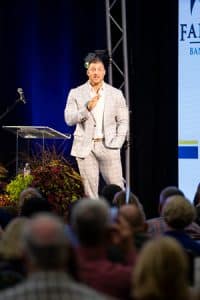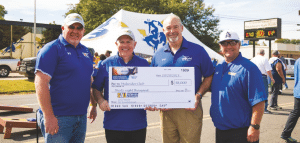Prior to 1999, technology trickled onto the SAU campus as the growing impact of the internet began showing a hint of the force it would become in education.
To address the evolving landscape of education being shaped by this new force of technology, Dr. Ed Kardas, current professor of psychology and director of the Honors College, formed a committee. The Faculty Development in Teaching with Technology Committee was developed to provide funds for bringing technology to campus and into the classroom to enhance the educational experience of students. The first technology grants awarded by the committee were to obtain an internet connection to Wilson Hall room 303.
“Technology has come a long way,” said current chair of the FDTT committee and associate professor of physics Dr. Abdel Bachri. “Unlike today, where wired and wireless internet connection is virtually available everywhere and taken for granted, it wasn’t that prevalent even then. Very few could predict that the internet would have such a drastic impact on teaching – the number of online classes and the amount of homework being done online, etc.”
Since that humble start, the FDTT committee has funded proposals by what it believes will have the largest impact on the greatest number of students and grants have been awarded to purposes all over the ever-changing campus in all of SAU’s four colleges.
After receiving a FDTT grant in spring 2010, Dr. Ganna Lyubartseva, assistant professor of chemistry in the College of Science and Technology, brought new technology to campus that has sparked the imagination of fellow professors and has been successful in connecting students to the learning process in a more active way.
Introduced to the “clicker” technology by a fellow chemistry professor at the University of Kentucky, Lyubartseva was intrigued by its possibilities that a little hand-held remote device could give each student access and the ability to connect with the professor during class.
“Student responses are anonymous to other students, which eliminates the burden of peer pressure from the student’s shoulders, but it allows me to ask thought-provoking questions, encouraging students to reflect their thinking, reveal misconceptions, probe their knowledge of a topic and track their individual progress in the course,” she said.
At her former university, once Lyubartseva incorporated the interactive audience response system technology into her own large class of 230 students, she was hooked and wanted to use the system at SAU. At her former university, students were required to purchase their own clickers. Lyubsartseva did not want to create additional burdens to her students at SAU, so she seized the opportunity and applied for funds from the committee. She was granted about $1,900 toward her vision.
“My initial purpose for using the clickers was to turn the large classes into an active and engaging learning environment,” she said. “Recent studies on the use of clickers in chemistry courses are connected to positive student attitudes. Educators have reported research on their effectiveness.”
Each student’s response is sent to the teacher, and is followed by an instantly constructed histogram of class-wide answers.
“These histograms provide students with the reassurance that they are not alone, even when they are wrong,” she said. “Also, students get the perception that they belong to the ‘community of learners’ – all struggling with the same ideas.”
The professor said the clicker is straightforward and user-friendly. It virtually takes less than a minute for students to get acquainted with the technology during the first practice session.
Lyubartseva said the system is a valuable tool to her as an instructor in designing the learning experiences to fit the students’ current state of knowledge and dynamically adjust her style of teaching “based on the students’ real and immediate needs.”
In the process of collecting more data on the subject, Lyubartseva said her initial findings indicate that the remote response system is having a positive effect on student performance. She presented her work with clickers at the SAU Teaching with Technology event in October 2011. Several colleagues have since started using the same technology in their classes.
“Honestly, I envy them, because the model of clickers they are using is more advanced than the ones I have… but, at the same time, for my students, clickers are free of cost. I can live with that,” she said, with a smile.
To estimate the technology’s effect on learning, Lyubartseva compared the percentage of B and above grades in her organic chemistry class before the clickers were incorporated with the percentage of those grades after. In the class with clickers, the results showed a marked improvement in grades.
For Lyubartseva, student opinion of the remote technology is crucial.
“For any technology in the classroom to be successful, the instructor needs to consider how students accept it. I conducted a mid-semester anonymous student survey on their use in my class. The results showed positive comments towards the use of this technology. That encourages me to continue using clickers.”




